In the world of
When you opt for used
But it’s not just about the savings. When you explore the realm of used clubs, you open the door to premium brands and models that might have seemed out of reach when exclusively shopping for new ones. Imagine experiencing top-tier performance without the hefty price tag – that’s the golden ticket used clubs offer.
Assessing Your Club Requirements
Before diving into the world of how to buy used
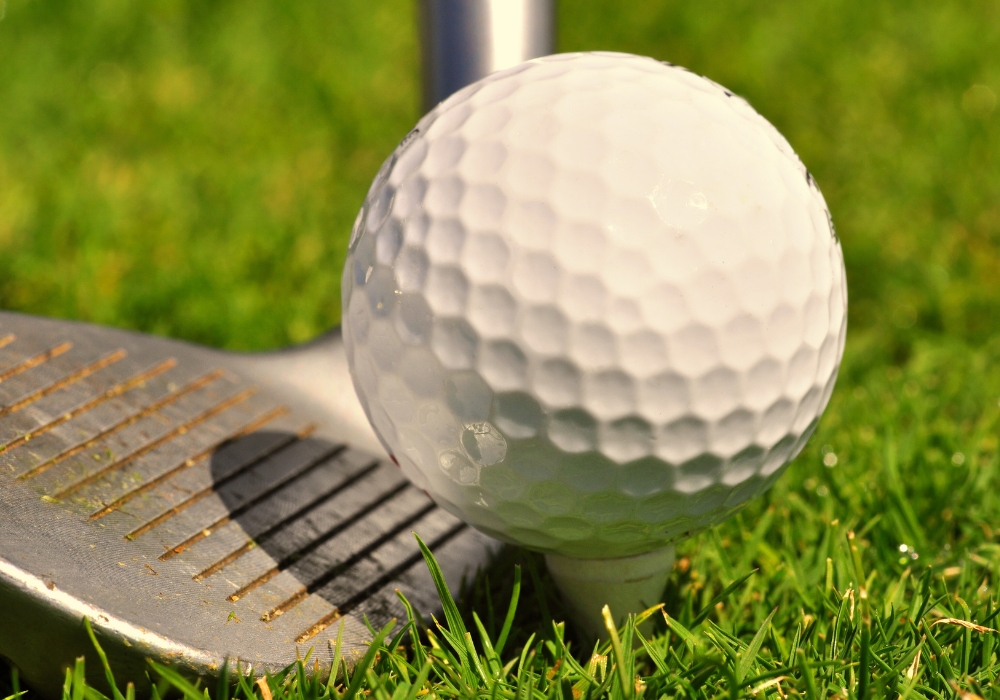
Determine Your Skill Level
- Beginner: If you’re new to the game, opt for clubs that are forgiving and user-friendly. Look for game-improvement irons and oversized drivers. These clubs offer extra forgiveness and distance, which can be a game-changer as you build your skills.
- Intermediate: For those in the middle of their
golf journey, consider a range of clubs that balance distance and control. Your choice may depend on your unique strengths and weaknesses on the course. - Advanced: Seasoned golfers, you’ve honed your style and preferences. Now, you’re on the hunt for clubs that offer precise control, workability, and features tailored to your game.
Analyze Your Playing Style
Your playing style is your golfing fingerprint. Here’s how to match it with the right clubs:
- Aggressive Player: If you revel in taking risks and going for those long shots, seek clubs that offer distance and accuracy. Think drivers with adjustable weights or low-handicap irons.
- Conservative Player: For those who prize control and accuracy, consider clubs that provide consistency, precision, and workability. Forged irons and mallet putters might be your go-to choices.
- Versatile Player: If you’re somewhere in between, striving for a balance between distance and control, look for clubs that offer a mix of forgiveness and precision. Cavity-back irons and adjustable drivers could be your secret weapons.
Types of Golf Clubs
In the vast landscape of
1. Drivers – The Kings of Distance
First up, we have the driver. With their sizable clubheads and extended shafts, they’re built for sending that ball soaring high and far. Think about the loft, shaft flex, and adjustability options that match your swing speed and launch angle.
- Loft: Drivers offer a range of loft angles, typically between 8 to 12 degrees. Choose the loft that syncs with your swing speed and launch style.
- Shaft Flex: Select a shaft with the right flex (stiff, regular, senior, or ladies) to match your swing tempo and power.
- Adjustability: Many modern drivers come with adjustability options for loft, lie, and weight distribution. These features allow you to fine-tune your shots for precision and distance.
2. Irons – The Swiss Army Knives of Golf
Irons play a pivotal role in approach shots and greenside finesse. Consider whether you might benefit from game-improvement irons for added forgiveness or player’s irons for enhanced control. Iron sets typically range from 3 to 9 irons, with pitching and gap wedges.
- Game-Improvement Irons: Forgiving and designed to help players with accuracy and distance, making them a great pick for beginners and high-handicap golfers.
- Player’s Irons: Offering more control, feel, and workability, these are favored by experienced golfers who prioritize precision.
- Cavity-Back Irons: With a larger sweet spot, these provide forgiveness while maintaining control. A fine choice for those seeking balance.
- Blade (Muscle-Back) Irons: The choice of skilled players who crave maximum control and shot-shaping ability, but they demand a higher skill level.
3. Hybrids – The Perfect Fusion Clubs
Hybrids bridge the gap between irons and woods. Determine if they should replace long irons or fill specific distance gaps in your game.
- Loft: Hybrids come in various loft angles, allowing you to replace specific long irons or fill distance gaps in your bag.
- Shaft Length: With shorter shafts than fairway woods, hybrids give you enhanced control.
4. Wedges – Short Game Champs
Wedges are your precision tools for short game mastery. Decide how many you need and the loft angles that sync with your playing style. Wedges vary in bounce degrees, affecting their interaction with the turf. Choose wisely based on your playing conditions.
- Pitching Wedge: A staple in iron sets, perfect for approach shots from the fairway.
- Gap Wedge: Bridges the gap between pitching and sand wedges, offering versatility.
- Sand Wedge: Your trusty sidekick for escaping bunkers and short approaches.
- Lob Wedge: Provides a high, soft trajectory for those shots that need to soar over obstacles or stop quickly on the green.
5. Putters – The Cinchers
Putting is personal. Try out different putters to find the one that feels like an extension of your hand and complements your putting stroke.
- Putter Type: They come in various shapes and designs – blades, mallets, and face-balanced models. Pick one that aligns with your alignment and stroke style.
- Length: Putters come in different lengths; find one that lets you maintain a comfortable and consistent posture.
Understanding the roles and nuances of each club type is your compass to navigating the golfing terrain. Stay with us as we delve into the next chapters of this guide, where we’ll unveil where to discover these clubs, how to gauge their condition, and tips for a triumphant purchase. At The Main Line Collective, we’ve got your
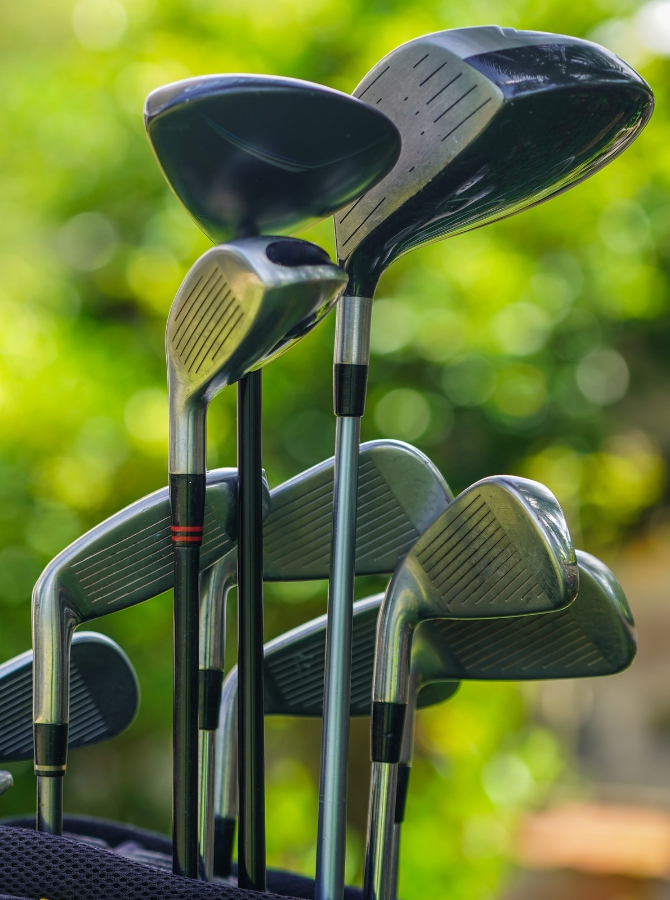
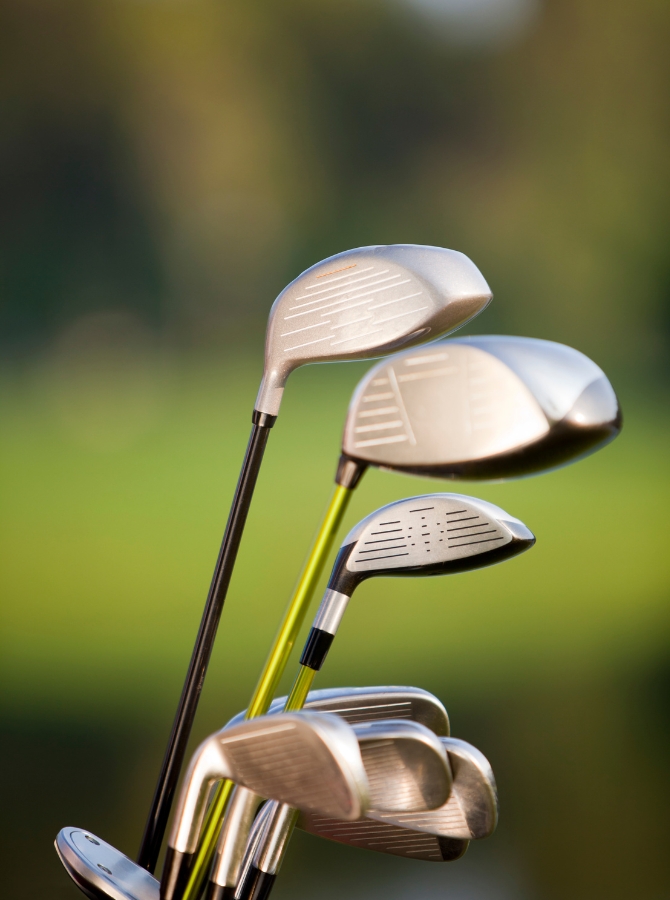
Where to Find Used Golf Clubs
In the quest for quality
- Local
Golf Shops and Pro Shops: Your localgolf shops and pro shops are like treasure troves of used clubs. Here, you can inspect them up close and personal, and some pro shops even offer enticing trade-in programs. The hands-on experience is invaluable; you can examine the clubs, ask questions, and sometimes take them for a spin on the driving range. - Online Marketplaces: Online giants like eBay, Craigslist, and Facebook Marketplace serve as virtual bazaars for used
golf clubs, offering a wide range of sellers. You’re spoiled for choice online, with the ability to browse a plethora of options, compare prices, and dive into reviews. Convenient search filters make finding specific brands or models a breeze. - Golf Retailers: Both physical and online
golf retailers often have sections dedicated to certified pre-owned or usedgolf clubs. These clubs are typically inspected, graded, and sometimes come with warranties, offering peace of mind. - Golf Club Resale Websites: Specialized websites like 2nd Swing and GlobalGolf focus solely on used
golf gear. These sites boast extensive inventories, detailed club information, and professional grading, simplifying your search. - Secondhand Sporting Goods Stores: Some secondhand sporting goods stores offer
golf club sections ripe for exploration. Here, you can touch and feel the clubs in person, and you might stumble upon fantastic deals on well-maintained clubs. - Golf Club Shows and Swap Meets: Regional
golf club shows and swap meets unite collectors and sellers ofgolf equipment. These events are goldmines for vintage or rare clubs, and you get to mingle with fellowgolf enthusiasts. - Golf Course Bulletin Boards and Classifieds: Certain
golf courses have bulletin boards or classifieds where local golfers list used clubs for sale. This community-focused approach allows you to discover clubs from your fellow golfers. - Golf Club Rental Programs: Some
golf courses and resorts sell their rental club sets as used equipment after a period of use. Expect well-maintained clubs, and you might even snag a lightly used set. - Golf Club Trade-In Programs: Numerous retailers and manufacturers run trade-in programs, allowing you to swap your old clubs for store credit or discounts on new or used clubs. It’s like trading your way to new clubs while trimming the cost.
- Auctions and Estate Sales: Auctions and estate sales sometimes unveil
golf club sets, especially if the previous owner was an avid golfer. Here, you might stumble upon unique or vintage clubs at competitive prices. These diverse options ensure you’ll find the perfect set of usedgolf clubs to elevate your game on the greens.
Understanding Used Golf Club Condition
Evaluating the condition of used
Grading Systems
Sellers and retailers often employ grading systems to communicate the state of used
- New: Clubs that have never graced a
golf course, often still wrapped in their original packaging. - Like New: Clubs showing minimal signs of use, with no noticeable wear or damage.
- Good: Clubs with visible signs of use, including minor scratches, scuffs, or wear on the clubface and sole.
- Acceptable: Clubs that have seen their fair share of action, sporting moderate to significant wear, including visible cosmetic imperfections and grip wear.
Understanding these grading systems is essential. If possible, communicate with the seller to gain insights into the condition of the clubs they’re offering.
Signs of Wear and Tear
When you’re inspecting used
- Clubface: Look for scratches, dings, or grooves that might be worn down. Grooves are your secret sauce for generating spin, so worn ones can impact your control and shot quality.
- Shaft: Give the shaft a thorough once-over. Check for visible damage like bends, cracks, or rust. Ensure the shaft remains arrow-straight; a bent shaft can throw your game off-kilter.
- Grip: The grip deserves your scrutiny too. A worn or damaged grip can mess with your hold on the club, affecting your swing. Grip replacement is an option, but factor in the cost when assessing overall value.
- Hosel and Clubhead: Examine the connection between the hosel (where the shaft meets the clubhead) and the clubhead itself. Damage in this area can compromise the club’s structural integrity.
- Sole and Leading Edge: The sole of irons and the leading edge of woods should not escape your watchful eye. These areas can influence how the club interacts with the turf and the ball.
- Ferrules: Those fancy rings at the top of the clubhead that connect to the shaft are called ferrules. Make sure they’re snug and not showing signs of cracking or looseness.
Spotting Damage or Defects
While some wear and tear are par for the course with used clubs, specific types of damage or defects should trigger alarm bells:
- Cracked or Split Shafts: These can lead to catastrophic club failure during your swing – not something you want on the fairway.
- Dented or Warped Clubheads: These issues can throw a wrench in your club’s performance and consistency.
- Rattling Clubheads: If you hear a suspicious rattle inside the clubhead, it may indicate loose or broken parts that can affect performance.
- Visible Rust: Rust on the clubhead or shaft might signal long-term neglect and could compromise the club’s integrity.
- Counterfeit Clubs: Be wary of clubs that appear as knockoffs or counterfeit versions of popular brands. Do your homework, research the model and brand, and confirm authenticity.
By conducting a thorough inspection and staying alert to potential issues, you can make informed decisions on how to buy used
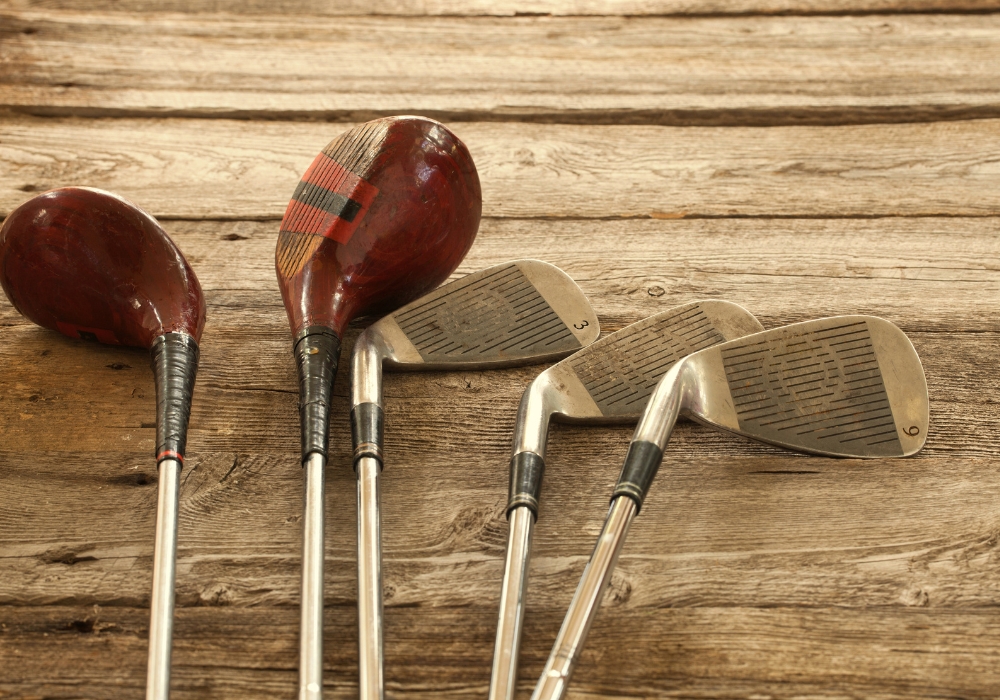
Testing Used Golf Clubs: In-Person vs. Online
When it comes to acquiring used
Testing In-Person
When you’re face-to-face with potential club mates, whether at a local
- Hands-On Inspection: Get up close and personal with the clubs. Examine them like a detective looking for clues. Look for scratches, dents, or any signs of wear to ensure they meet your standards.
- Swing on the Range: Many spots have practice areas or driving ranges where you can take these clubs for a spin. Swing away to gauge how they perform and feel during your stroke.
- Seek Wisdom: The pros or experienced staff on-site can offer pearls of wisdom tailored to your swing and preferences.
- Immediate Feedback: You get instant feedback on whether these clubs harmonize with your playing style.
Testing Online
When your quest for used clubs takes you to the vast online fairway, the rules change, but you can still master the game:
- Research and Detailed Listings: Dive deep into your research by reading those listings with eagle eyes. Look for sellers who provide the lowdown on club condition, specs, and any wear and tear.
- Ask Away: Engage with the seller like a seasoned interviewer. Ask specific questions about the clubs and request more photos if you’re uncertain about any areas.
- Reviews Matter: Check for reviews or feedback from fellow buyers who’ve crossed this bridge before. Their experiences can be a compass guiding you through the purchase.
- Return Policy: Before hitting the “buy” button, inquire about the seller’s return policy. Some may offer a return window or satisfaction guarantee, giving you the peace of mind to test the clubs upon arrival and return them if they don’t sing your tune.
Alternatives to Test Runs
Sometimes, a test run just isn’t in the cards, especially when shopping online. In such cases, consider these alternatives:
- Golf Store Visit: If a specific club model has caught your eye, visit a local
golf store to try out a new version of the same club. It’s like a sneak peek into what you might be getting. - Demo Days: Keep an eye out for
golf manufacturer demo days atgolf courses or stores. You can test the latest club models, even if you’re not eyeing brand new clubs. - Trust the Seller: When shopping online, favor sellers known for their honesty. Those who accurately describe their clubs are more likely to deliver as promised.
- Buyer Protection: Use secure payment methods like PayPal that offer buyer protection. It’s like an insurance policy for your purchase.
Remember, while in-person testing delivers the most immediate insights, meticulous research and communication can still be your caddie when buying used
Time to Hit the Greens!
Congratulations on completing this comprehensive guide how to buy used
If you’re eager to keep your newfound clubs in top-notch condition, don’t miss our guide on the “Care and Maintenance of
Alternatively, if you’re leaning towards the allure of brand-new clubs, be sure to check out our guide on The Ultimate Guide to Buying Women’s
With your clubs in hand, you’re ready to tee off and conquer the greens with confidence. Happy golfing!
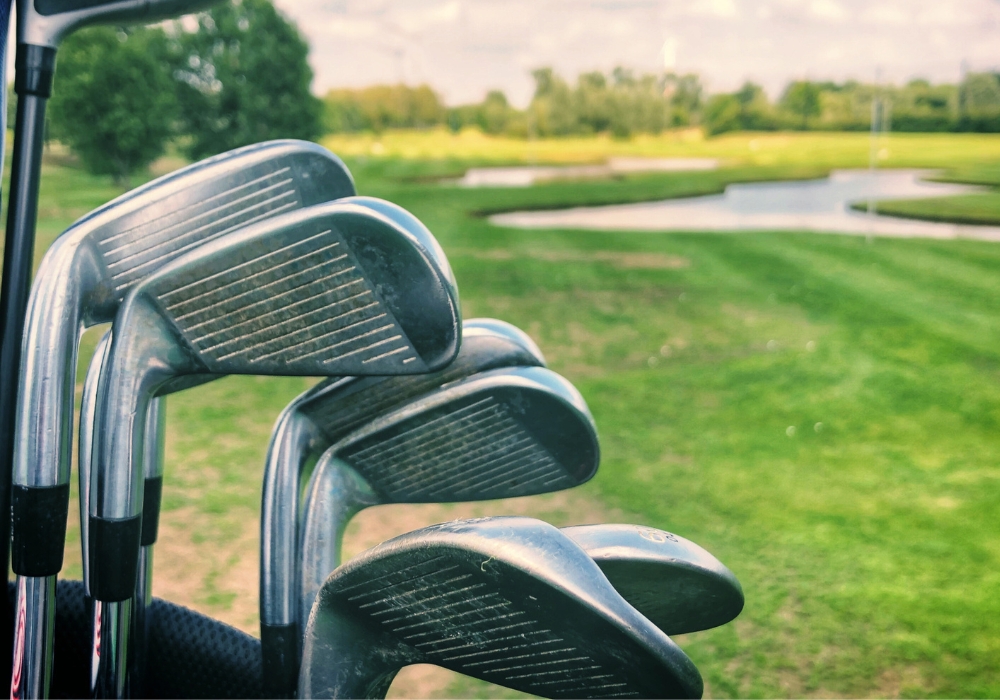



Leave a Reply